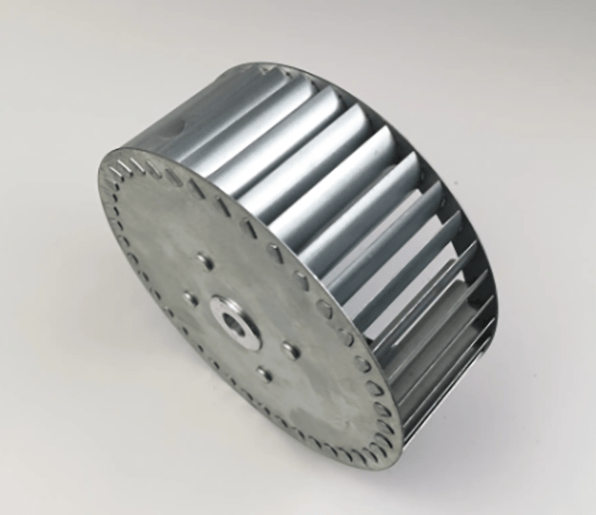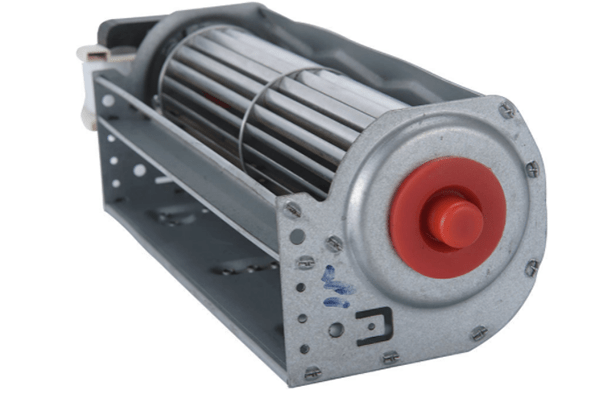
Figure 1: Centrifugal fans in the data center.
Without fans, it is impossible to ensure that equipment
components operate at a constant temperature. Long-term continuous high-temperature operation of equipment will
accelerate the aging of components and shorten the life cycle of equipment operation. Therefore, almost all
electronic equipment in the data center has fans and there also are various ventilation fans installed in the data
center room. So do you know what these fans are?
In data centers, the most common problem encountered is how to distinguish centrifugal fans from axial fans.
1. Centrifugal Fan
The common appearance of centrifugal fan is shown in Figure 2:

Figure 2: Appearance of centrifugal fan.
Its characteristic is that the airflow changes direction after passing through it: the airflow enters along the direction of the impeller rotation axis, and then is "thrown out" radially, and the direction changes by 90°. Please see Figure 3.

Figure 3: The airflow direction of the centrifugal fan.
1-Intake chamber 2-Air inlet 3-Impeller 4-Volute 5-Main shaft 6-Air outlet 7-Exit diffuser
The centrifugal fan mainly includes: impeller, volute, shaft and bearings, etc., and please see Figure 4, Figure 5,
and Figure 6 respectively.

Figure 4: Centrifugal impeller.

Figure 5: Centrifugal impeller + volute + shaft and bearings.

Figure 6: Centrifugal fan + motor + transmission belt + belt pulley.
It should be noted that there are many types of impellers for centrifugal fans. The impeller shown in Figure 7 is also a centrifugal impeller.

Figure 7: Other types of centrifugal impellers.
In short, see if the airflow enters along the axial direction of the fan impeller's rotation axis and then
discharges in a radial direction. This is the key point to determine whether it is a centrifugal fan.
Centrifugal fans are a common type of room based precision air conditioner blowers in the data centers.

Figure 8: Centrifugal fan coil.
2. Axial Fan
The inlet and outlet directions of the axial flow fan are along the axis of the rotation axis, which is why the term "axial flow" is derived, as shown in Figure 9.

Figure 9: The air inlet and outlet directions of the axial flow fan.
Axial fans are often equipped with a cylindrical housing, as shown in Figure 10.

Figure 10: Appearance of axial flow fan.
Household fans, whether ceiling fans, floor fans, or table fans, are usually of the axial flow type. In data centers, the outdoor cooling fans of precision computer room air conditioners and the cooling fans of water cooling towers are usually of the axial flow type.
3. Mixed Flow Fan
The appearance of a mixed flow fan (also known as a diagonal flow fan) is very similar to the axial flow type and it is difficult to distinguish them with the naked eye. The diagonal flow fan makes the air move both centrifugally and axially. Its appearance is shown in Figure 11.

Figure 11: Mixed flow fan.
In terms of performance, it is a fan between centrifugal and axial flow fans.
4. Cross-Flow Fan
Compared with the previous fans, the cross-flow fan is a bit unique. The airflow enters radially from the rotating surface and then exits radially from the other side. Therefore, its exterior is usually equipped with a casing to determine the air inlet and outlet, and the axial direction is usually closed. See Figure 12 for its appearance and Figure 13 for its air flow direction diagram.

Figure 12: Cross-flow fan.
-min.png)
Figure 13: Schematic diagram of cross-flow fan air flow (radial section).
Since the width of cross-flow fan impeller can be made very wide, air curtain fans often adopt this type. In addition, the indoor air blower of household wall-mounted air conditioners usually adopts this type.


